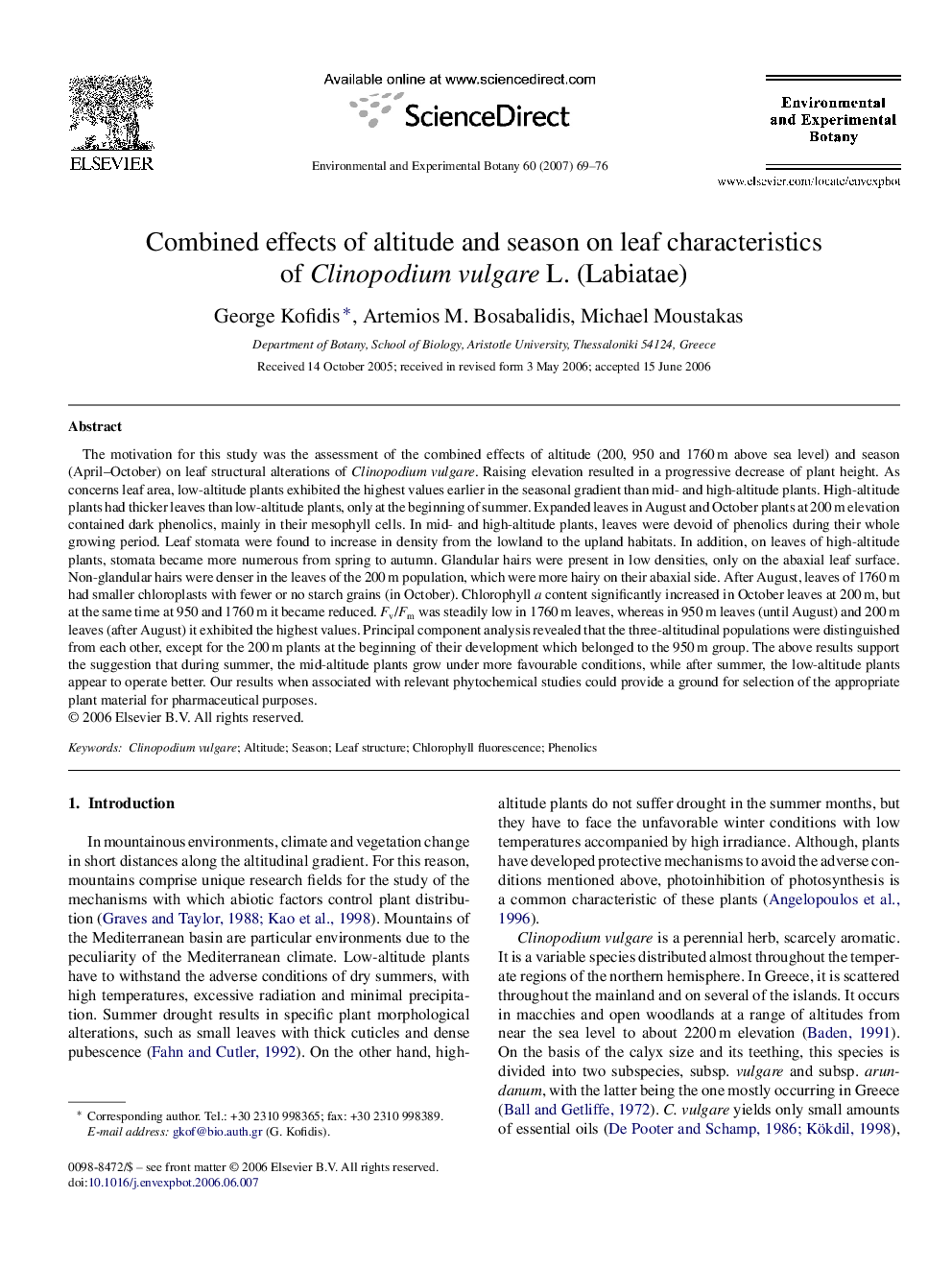| کد مقاله | کد نشریه | سال انتشار | مقاله انگلیسی | نسخه تمام متن |
|---|---|---|---|---|
| 4555625 | 1329270 | 2007 | 8 صفحه PDF | دانلود رایگان |

The motivation for this study was the assessment of the combined effects of altitude (200, 950 and 1760 m above sea level) and season (April–October) on leaf structural alterations of Clinopodium vulgare. Raising elevation resulted in a progressive decrease of plant height. As concerns leaf area, low-altitude plants exhibited the highest values earlier in the seasonal gradient than mid- and high-altitude plants. High-altitude plants had thicker leaves than low-altitude plants, only at the beginning of summer. Expanded leaves in August and October plants at 200 m elevation contained dark phenolics, mainly in their mesophyll cells. In mid- and high-altitude plants, leaves were devoid of phenolics during their whole growing period. Leaf stomata were found to increase in density from the lowland to the upland habitats. In addition, on leaves of high-altitude plants, stomata became more numerous from spring to autumn. Glandular hairs were present in low densities, only on the abaxial leaf surface. Non-glandular hairs were denser in the leaves of the 200 m population, which were more hairy on their abaxial side. After August, leaves of 1760 m had smaller chloroplasts with fewer or no starch grains (in October). Chlorophyll a content significantly increased in October leaves at 200 m, but at the same time at 950 and 1760 m it became reduced. Fv/Fm was steadily low in 1760 m leaves, whereas in 950 m leaves (until August) and 200 m leaves (after August) it exhibited the highest values. Principal component analysis revealed that the three-altitudinal populations were distinguished from each other, except for the 200 m plants at the beginning of their development which belonged to the 950 m group. The above results support the suggestion that during summer, the mid-altitude plants grow under more favourable conditions, while after summer, the low-altitude plants appear to operate better. Our results when associated with relevant phytochemical studies could provide a ground for selection of the appropriate plant material for pharmaceutical purposes.
Journal: Environmental and Experimental Botany - Volume 60, Issue 1, May 2007, Pages 69–76